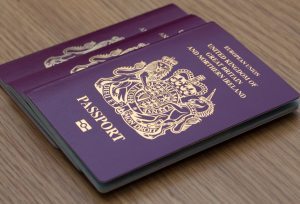Navigating Naturalization and Citizenship Genealogy Records

Learning about your ancestors’ citizenship and naturalization through genealogical research is fascinating. When did your family come to America’s shores? There are many ways to learn this information, from immigration records to mining family lore. But another important question that many beginning researchers miss is when and if your immigrant ancestors became naturalized. Naturalization is the process where someone formally becomes a US citizen. Here is a closer look at how to navigate naturalization documentation.
Derivative citizenship
One of the most important concepts to understand about naturalization is that of derivative citizenship. The idea is simple: between 1790 and 1922, citizenship was automatically given to the wife of any man who became a US citizen. The same provisions were automatically made until 1940 for minor children below age 21. Unfortunately, the names or demographic details of wives and children were not always recorded – either in the requests for naturalization that were filed or in the subsequent government records. If your ancestor was an immigrant female that married an already naturalized male, she automatically received citizenship and there are unlikely to be specific records of that.
Records varied widely
1906 was a game changing year for naturalization. In September of that year, the Basic Naturalization Act streamlined the naturalization process and centralized that authority with the Bureau of Immigration and Naturalization. Today that branch of the government is known as U.S. Citizenship and Immigrations Services (USCIS). Before that date, records of naturalization could be handled by any court including local, county, state, federal, criminal, or marine. Further, no uniform forms or process was used. After the Basic Naturalization Act, the vast majority of petitions were managed in federal court.
The revised process was more uniform
After 1906, the revised process for naturalization became more uniform and followed a predictable pattern. Luckily for genealogical researchers, this streamlined the paper trail as well. The first step was to file first papers, or a Declaration of Intention, usually soon after arrival in the United States. The final filing from the petitioner was made after residency requirements had been fulfilled, and this was also known as the formal Naturalization Petition. If the application was approved, a Certificate of Naturalization would be issued.
Sometimes the census holds a clue
If you’re having trouble tracking down specific records, check the Census. In 1870, the Census has a column for non-native males over the age of 21 who had been naturalized. A checked box would indicated naturalization prior to that year. Between 1900 and 1930, the census asked for the naturalization status and used abbreviations including Na. (naturalized), Pa. (paperwork file), and Ai. (alien resident). Sometimes language barriers, lack of education on the topic, or other motives may have encouraged people to self-report incorrect information on the census however.
Challenges with naturalization records
Besides the issues described above, researchers often find a number of other challenges with naturalization records. One is that the initial papers may have been filed in a different court than where the naturalization was granted, as your ancestor migrated. The result could be a trail that runs cold. Other issues include errors – whether honest mistakes or purposefully fudged details for whatever reason – on the court paperwork. Applicants have been known to change everything from name to date of birth to dates and locations of arrival for any number of reasons.
Still, even with all the flaws in our naturalization process record keeping, finding these rare glimpses into the steps your ancestors took to become citizens can be deeply rewarding. If you’re interested in learning more or want professional genealogical assistance, contact Price & Associates today to arrange for a personalized consultation.
